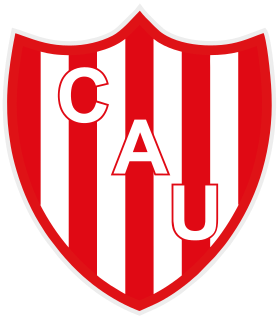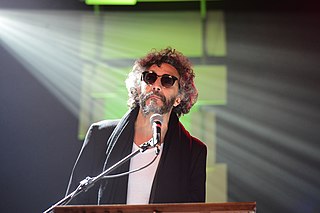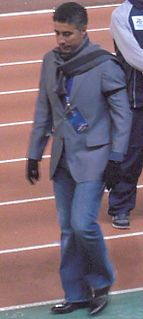
The music of Argentina includes a variety of traditional, classical and popular genres. One of the country's most significant cultural contributions is the tango, which originated in Buenos Aires and its surroundings during the end of the 19th century and underwent profound changes throughout the 20th century. Folk music was particularly popular during the 20th century, experiencing a "boom" in popularity during the 1950s and 1960s thanks to artists such as Atahualpa Yupanqui and Mercedes Sosa, prominent figures of the Nuevo cancionero movement. In the mid-to-late 1960s, the countercultural scene of Buenos Aires originated Argentine rock, considered the earliest incarnation of Spanish-language rock for having an autochthonous identity that differed from that of England or the United States. It was widely embraced by the youth and since then has become part of the country's musical identity as much as traditional music. According to the Harvard Dictionary of Music, Argentina also "has one of the richest art music traditions and perhaps the most active contemporary musical life.
David Markey is an American film director.

KCRW is a National Public Radio member station broadcasting from the campus of Santa Monica College in Santa Monica, California, where the station is licensed. KCRW airs original news and music programming in addition to programming from NPR and other affiliates. A network of repeaters and broadcast translators, as well as internet radio, allows the station to serve the Greater Los Angeles area and other communities in Southern California. The station's main transmitter is located in Los Angeles's Laurel Canyon district and broadcasts in the HD radio format. It is one of two full NPR members in the Los Angeles area; Pasadena-based KPCC is the other.
Argentine rock is rock music composed or performed by Argentine bands or artists mostly in Spanish.

Club Atlético Unión (Spanish pronunciation: [ˈkluβ aˈtletiko uˈnjon]; mostly known as Unión de Santa Fe[uˈnjon de santa ˈfe], is a sports club from Santa Fe, the capital city of the Santa Fe Province, in Argentina. The club was founded on April 15, 1907 and plays in the Argentine Primera División.

Rodolfo Páez Ávalos, popularly known as Fito Páez, is an Argentine popular rock and roll pianist, lyricist, singer-songwriter and film director.

Raúl Alberto Antonio Gieco, better known as León Gieco is an Argentine folk rock performer, composer and interpreter. He is known for mixing popular folkloric genres with Argentinian rock and roll, and lyrics with social and political connotations. This has led to him being called "The Argentine Bob Dylan".
Jom Tob Azulay Filmmaker and diplomat, born in Rio de Janeiro (1941). From 1971 to 1974 serves as deputy-consul of Brazil in Los Angeles while attending courses in film technique, history and aesthetics at University of Southern California (UCS), UCLA and California Institute of the Arts. Becomes familiar with the technique and aesthetics of direct-cinema in 16mm, which at the time became dominant in the production of the Documentary and which he considers appropriate for the development of an independent cinema in Brazil, including fiction. In 1972 takes a course with Hollywood’s highly influential Slavko Vorkapich on Film as a Visual Art. In 1973, the experience of filming with Brazilian director of photography Fernando Duarte the recording of the LP Tom & Ellis will be decisive for the outcome of his future projects of musical documentaries in Brazil. In Los Angeles he is acquainted with the film Brazil: Report on Torture, a documentary about torture during the Brazilian military regime made in Chile by Haskell Wexler and Saul Landau (1971), which he helps to publicize clandestinely in Brazil and in the US. In 1975 he resigns for political reasons from the Ministry of Foreign Relations. Still in Los Angeles, he meets the Brazilian world-known filmmaker Alberto Cavalcanti (1897-1982) with whom he would later work influencing him in his conception of cinema. Returning to Brazil in 1974, he produces with the support of state-owned Embrafilme Um Homem e o Cinema, Cavalcanti`s last work, and makes his first films as photographer-director: the medium-length documentary Exu Mangueira (1975) and the short Euphrasia (1975). Both point to his future aesthetic and thematic inclinations: the immediate rouchian apprehension of reality of direct-cinema and the reconstitution of the historical past. In 1975, he is one of the first to use portable-video equipment in Brazil, photographing video-art works by Rio de Janeiro's prominent plastic artists, as Annabela Geiger and Fernando Cochiaralli. His first feature films, The Sweet Barbarians about famed Caetano Velloso, Maria Bethania, Gilberto Gil and Gal Costa and Heart Pounding Beat (1983), are musicals about pop music using direct-cinema technique. Heart Pounding Beat uses direct-cinema technique in a fictional comedy language in which two actors improvise their dialogues as the real action - a Gilberto Gil tour from north to south of the country – takes place. The sound of the film in Dolby-Stereo, processed in Los Angeles, introduces this vital audio technology for the first time in Brazilian cinema. In 1993, he is the Brazilian producer of the ending of It's All True, unfinished film by Orson Welles, shot in 1942 in Brazil. In 1995, he releases O Judeu, a historical film, filmed in Portugal, first Portuguese-Brazilian official coproduction which he produces and directs with an international cast and technical crew. The Jew wins among others the prize of Best Movie at the 1995 Brasilia Film Festival and the HBO/Brazil (1996) award, as well as other national and international awards. Launched commercially in New York receives a positive review in the New York Times which critic Stephen Holden compares its photography, by the renowned Portuguese DP Eduardo Serra, to the painting of Caravaggio. This experience leads him to dedicate himself to the Portuguese-Afro-Brazilian cultural heritage as the thematic source for his future film projects, such as the film Estorvo by Ruy Guerra (1998), a Portuguese-Cuban-Brazilian coproduction of which he was delegate-producer. From 1999 to 2001, he works in public television as director of programs and documentaries, while also teaches cinema at Estácio de Sá University. From 2002 to 2007, acts as Head of Strategic Affairs at the recently created National Agency of Cinema (ANCINE), in which he contributes significantly to the formulation and execution of the agency's international policy. He publishes texts and gives lectures in Brazil and abroad on cinematographic politics and culture, such as the article For a Cinematographic Policy for the 21st Century in The World Film Industry, organized by Alessandra Meleiro. He acts also as audiovisual thesis examiner for the course of the Rio-Branco Institute / MRE (2006). In 2010, he is reinstated in the diplomatic career by the Amnesty Commission of the Ministry of Justice and assigned as cultural and audiovisual attaché to the Brazilian embassy in New Delhi, India. In his works, Azulay seeks to convey critical thematic objectivity with an aesthetic audiovisual look such as in: Aide-Memoire - Paths of Brazilian Diplomacy, first documentary on Brazilian diplomacy and foreign policy; Debret - A Watercolor of Brazil ,ocumentary about the French painter Jean Baptiste Debret, BNDES Selection award using puppet characters mixed with sophisticated digital special effects; Portrait of Cavalcanti, documentary for Canal Brasil about Alberto Cavalcanti; Five Times Machado, tv series based on Brazil’s top writer Machado de Assis` short-stories of which he was producer and director apart from directing one of the episodes. This work used modern high-definition (HD) digital technology technique to attain a direct-cinema approach in the reconstitution of a 19th. Century historical time piece. Nowadays he is dedicated to the streaming production of the series Cartas Bahianas, once again a historical co-production with Portugal with screenplay by Millor Fernandes, Geraldo Carneiro and Ruy Guerra apart from also organizing reviews and preservation projects of his work and texts.
Latin American cinema refers collectively to the film output and film industries of Latin America. Latin American film is both rich and diverse, but the main centers of production have been Argentina, Brazil and Mexico. Latin American cinema flourished after the introduction of sound, which added a linguistic barrier to the export of Hollywood film south of the border.

Claudio Hugo Lepratti, popularly known as Pocho Lepratti, was an Argentine political activist volunteer who worked in a poor neighbourhood in the city of Rosario, and who was shot and killed by the Santa Fe Provincial Police during the December 2001 riots, when he tried to stop police agents from firing at a children's school.

Alexandre Tadeu Gallo, known as Alexandre Gallo or just Gallo, is a Brazilian football manager and former player who played as a defensive midfielder. He is the current manager of Santa Cruz.
Jorge Nisco is an Argentine director and assistant director best known for Killer Women (2005), Epitafios (2004), and Malparida (2010).

Carlos Alberto Mestre mostly known by his stage name Nito Mestre, is an Argentine musician, founding member –along with Charly García– of Sui Generis, member of PorSuiGieco, bandleader of Nito Mestre y los Desconocidos de Siempre and a recording solo artist. Sui Generis, was initially formed in 1969 by Charly García, Nito Mestre, Rolando Fortich, Juan Belia (guitar), Alberto Rodriguez (drums) and Carlos Piegari (vocals). Later on, Sui Generis became a duo as everyone left except for García. After the band split in 1975, Nito Mestre formed a new band called "Nito Mestre y los Desconocidos de Siempre" with María Rosa Yorio on vocals, Rodolfo Gorosito on guitar, Alfredo Toth on bass, Ciro Fogliatta on keyboards and Juan Carlos "Mono" Fontana as a drummer. In the early 80s, Nito pursued a solo career.

Antonino Pasquale D'Ambrosio, is an Italian-American author, filmmaker, producer, and visual artist.

Che Rise and Fall is a documentary film created by Eduardo Montes-Bradley. The film was entirely shot in Cuba at the time Che Guevara’s remains were airlifted from Bolivia to Santa Clara the final resting place. The documentary features the testimonies of Guevara’s comrades-in-arms in Sierra Maestra, Congo and Bolivia, also with Alberto Granado with whom Guevara rode a motorcycle from Argentina on a trip that will end 16 years later in the jungles of Bolivia, an experience that was brought to the big screen on The Motorcycle Diaries. Che Rise and Fall begins with an account of Guevara's death in Bolivia in 1967, and fittingly ends with footage of the return of his remains for interment in a monument in Santa Clara's Revolution Square some 30 years later.

Abel Pintos, is an Argentinian singer-songwriter. He started his solo career at the age of 13 with his album Para cantar he nacido, supported financially by León Gieco. After the release of four studio albums, he started writing his own songs that marked a departure from his folk style.
David Olivera is a photographer and director of photography from Santa Cruz de Tenerife, Canary Islands.
Sólo le pido a Dios is a famous protest song, written by Argentine singer-songwriter León Gieco. It is the first song of Gieco's 1978 album, IV LP.










